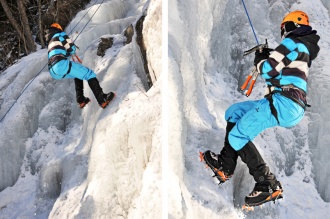Rock climbing is inherently dangerous. Gravity rarely ever forgives mistakes. However, rock climbing is also a beautiful and exhilarating sport. Most rock climbers are physically fit and develop good balance and posture. In order to enjoy the beauty of the sport, it is important that rock climbers, especially beginners, familiarize themselves with the different safety rules associated with the sport. Knowing the correct gear to pack (as well as what to avoid) goes a long way in ensuring safety.
It is imperative to know that the more fit you are, the safer your climb will be. Wrists, hands, shoulders and elbows are the areas that are most vulnerable to injuries due to carelessness and over-exertion of the body. Work on balance and overall strength and not on building large muscle groups. Build your heart rate and work on finger strength. 
Always Wear a Climbing Helmet
A Rock climbing helmet is essential if you want to live long and prosper. Always wear one when climbing or belaying. Helmets protect your head from falling rocks climbing and from the impact of falling. Remember that your head is soft and the rock is hard. Head injuries from falls and rockfall are serious life-changing events. A helmet keeps your head safe.
Build Muscle Fitness
Rock climbing is an intense physical sport that requires strong leg, stomach, and arm muscles. Most rock climbers spend a lot of time improving their fitness before attempting challenging climbs.
Breathe
Control your breathing. This is super essential. It will again help to keep you on the wall for longer as well as keep you relaxed and focused on the next move. When working through a tough sequence of moves, take deep breathes and try to stay relaxe
Always Check Knots
Before you start climbing, always double check to make sure that the lead climber’s tie-in knot (usually a Figure-8 Follow-Through) is tied correctly and finished with a backup knot. Also check that the rope is threaded through both the waist loop and the leg loops on the harness.
Crash Pad
The crash pad is a mat which sits below the climbing wall or structure and is designed to brake the climbers fall. When bouldering, a climber is not roped up and thus has to directly consider the direction of the body when falling.
